How To Take Videos Of The Planets Through A Telescope With A Canon Rebel Camera
ESO's Very Large Telescope (VLT) is a flagship facility for European ground-based astronomy. It is one of the earth'southward most advanced optical telescopes, consisting of iv Unit Telescopes with primary mirrors of eight.2m diameter and 4 movable one.8m diameter Auxiliary Telescopes. The telescopes can work together, to grade a behemothic 'interferometer', the ESO Very Big Telescope Interferometer, allowing astronomers to choice upwards much finer details of the creation than would exist possible with the ATs or the UTs alone.
The 8.2m diameter Unit of measurement Telescopes can also be used individually. With one such telescope, images of celestial objects as faint as magnitude 30 tin can exist obtained in a i-hour exposure. This corresponds to seeing objects that are iv billion (four thou meg) times fainter than what can exist seen with the unaided centre.
The large telescopes are named Antu, Kueyen, Melipal and Yepun.
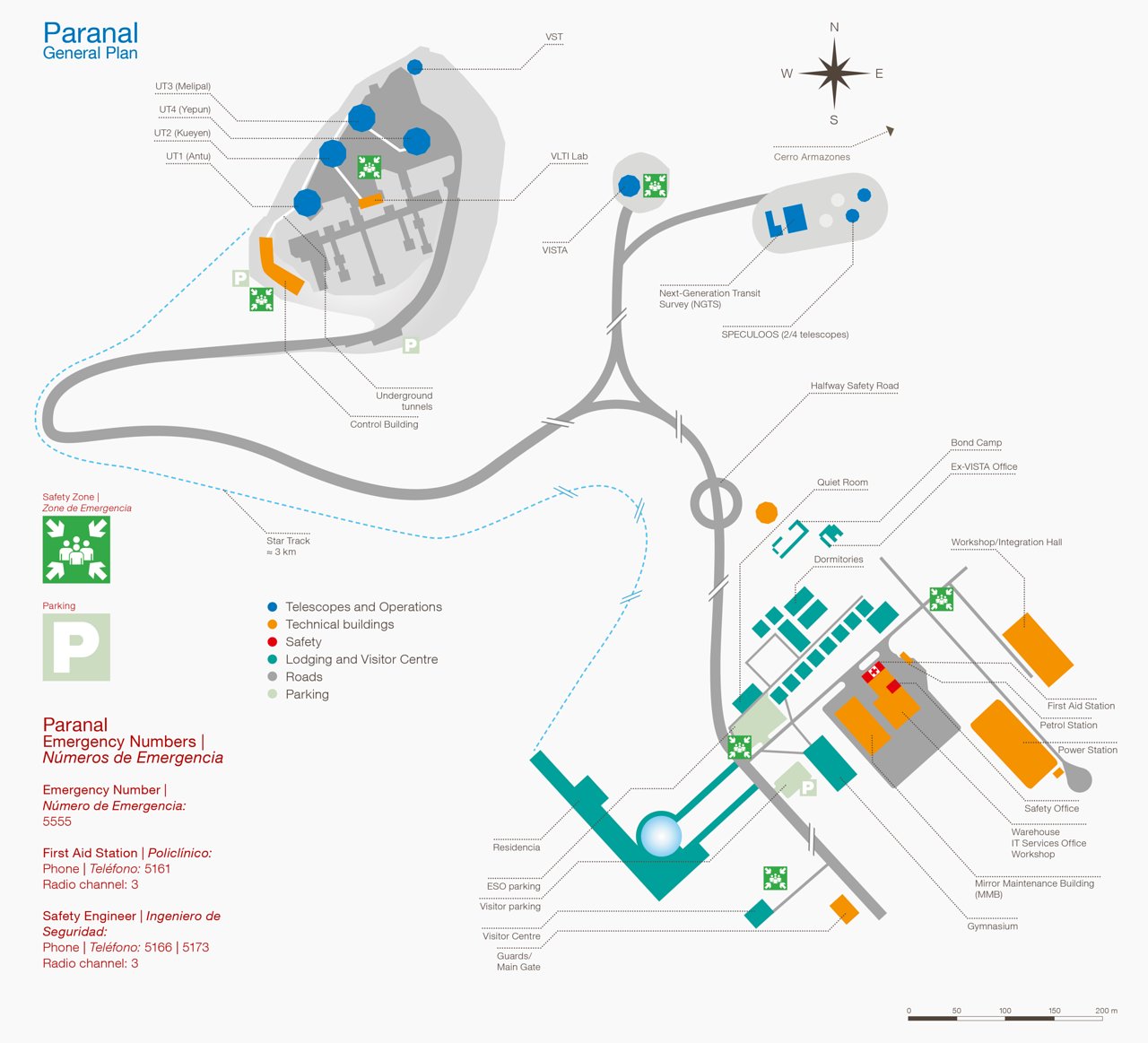
Paranal map and safety. Credit: ESO
Webcam
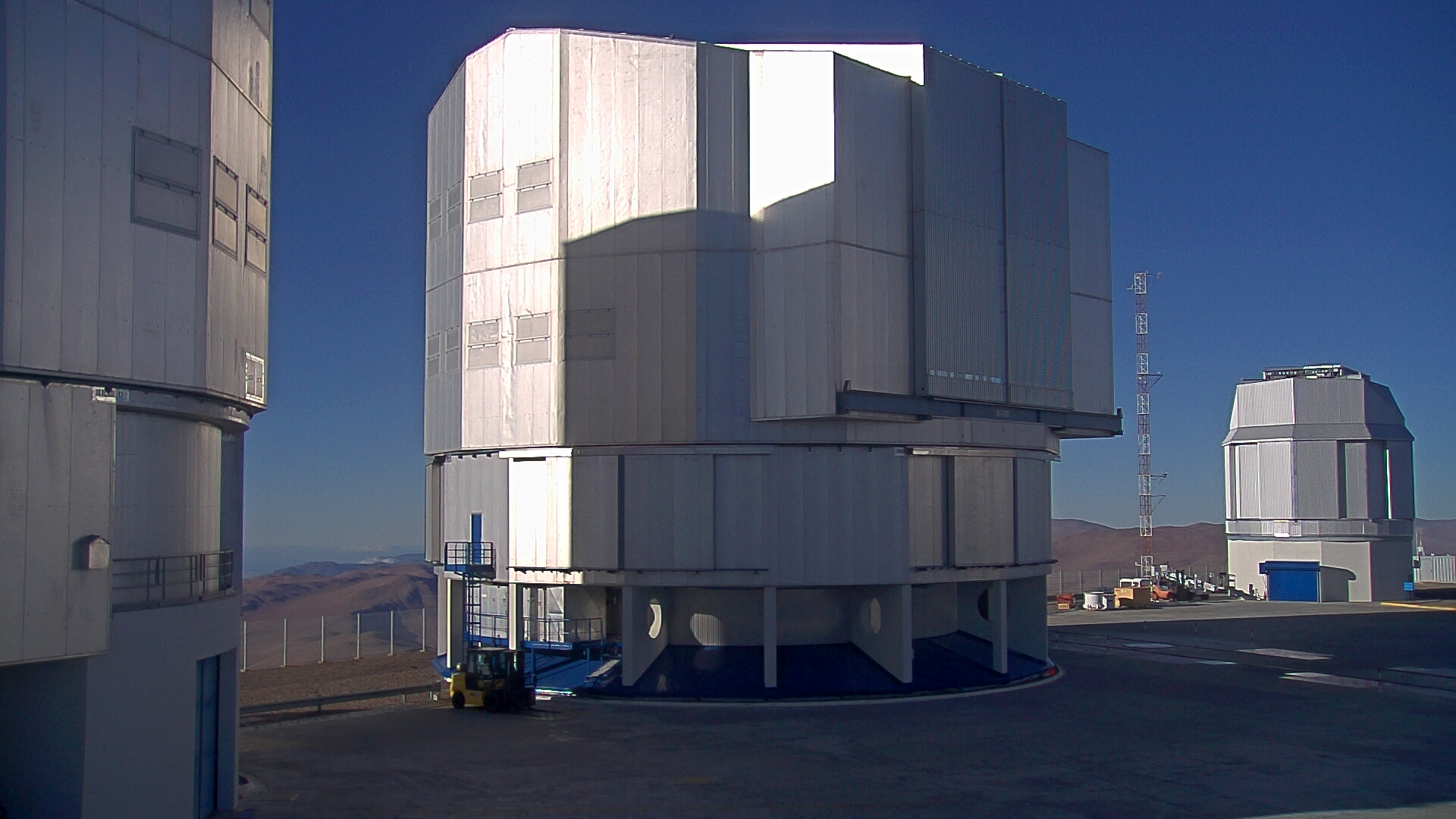
LIVE
Latest available paradigm of MELIPAL, also known equally UT3 ()
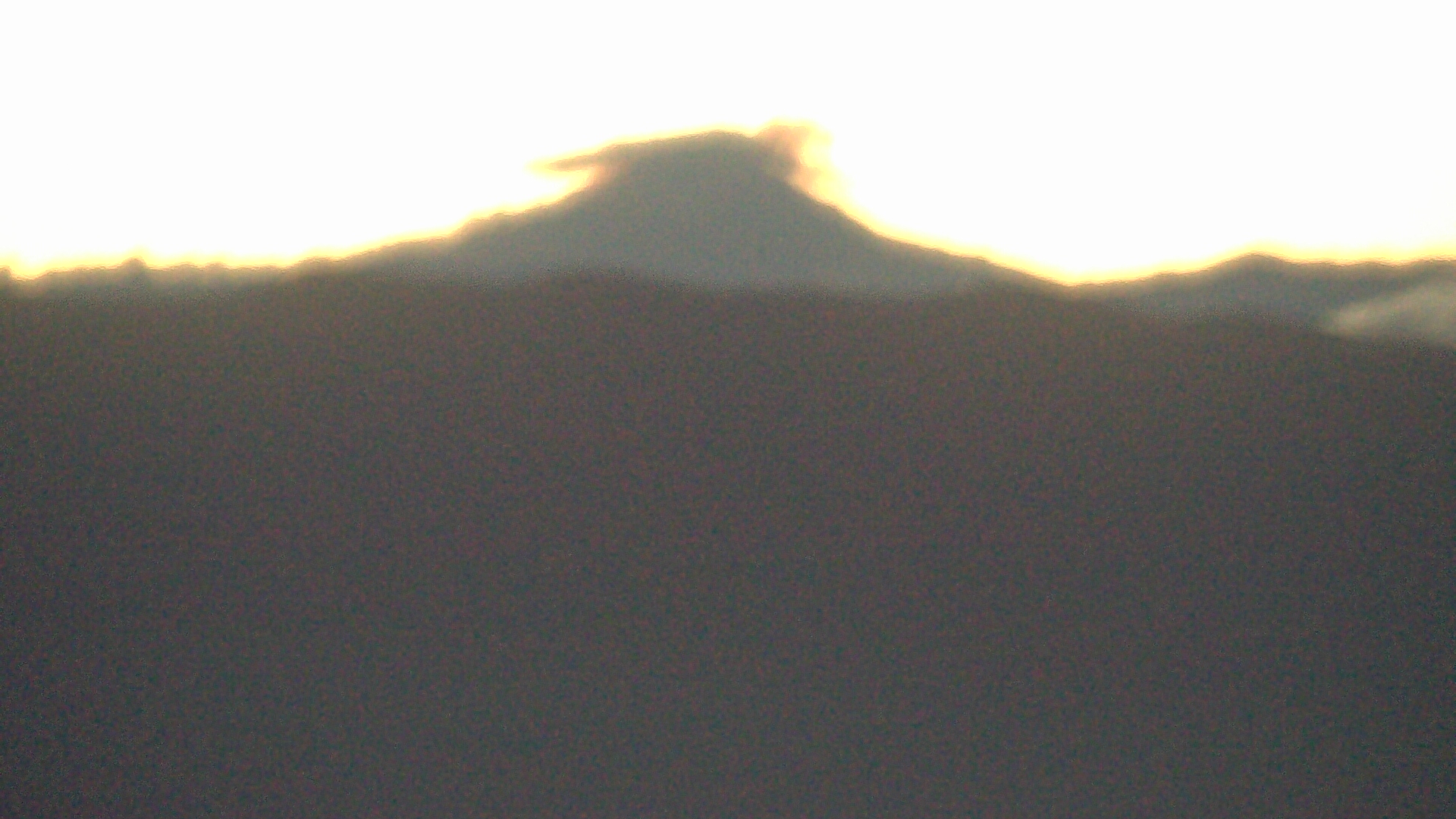
Live
On extremely clear days the magnificent 6739-metre volcano Llullaillaco is visible in the background of this photo. It is an amazing 190 kilometres abroad on the edge with Argentina. ()
| Alive Circular fisheye | Alive Extra deep night-fourth dimension circular fisheye. NB: only live at night. |
A Bout at Paranal Observatory
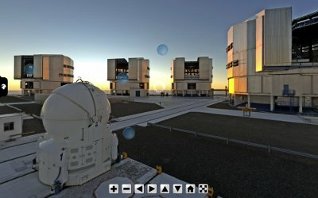
Click on the prototype to have a Virtual Tour in and nearby the VLT.
Visit Paranal Observatory
- Journalists, scientific discipline writers and producers, please meet Media Visits
- Tourist, students and lay people, please run into Tourists and Students Visits
Telescopes and Instruments
The VLT instrumentation programme is the most ambitious programme e'er conceived for a unmarried observatory. It includes large-field imagers, adaptive eyes corrected cameras and spectrographs, also every bit high-resolution and multi-object spectrographs and covers a broad spectral region, from deep ultraviolet (300 nm) to mid-infrared (24 µm) wavelengths.
The Unit Telescopes
The 8.2m diameter telescopes are housed in compact, thermally controlled buildings, which rotate synchronously with the telescopes. This blueprint minimises whatsoever adverse effects on the observing atmospheric condition, for instance from air turbulence in the telescope tube, which might otherwise occur due to variations in the temperature and air current flow. The get-go of the Unit Telescopes, 'Antu', went into routine scientific operations on i April 1999. Today, all four Unit Telescopes and all four Auxiliary Telescopes are operational.
VLT Unit Telescope enclosures:
- Meridian: 2850 cm
- Diameter: 2900 cm
The Auxiliary Telescopes
Although the four 8.ii-metre Unit of measurement Telescopes can exist combined in the VLTI, they are generally used for private observations and are but bachelor for interferometric observations for a limited number of nights every year. Just 4 smaller, dedicated one.8-metre Auxiliary Telescopes (ATs) are available to allow the VLTI to operate every night.
More than information is available on this link
Science with the Very Large Telescope
 The VLT has fabricated an undisputed affect on observational astronomy. It is the most productive individual ground-based facility, and results from the VLT take led to the publication of an average of more than one peer-reviewed scientific paper per twenty-four hours. VLT contributes greatly to making ESO the nigh productive ground-based observatory in the earth. The VLT has stimulated a new age of discoveries, with several notable scientific firsts, including the first prototype of an extrasolar planet (eso0428), tracking individual stars moving effectually the supermassive black hole at the heart of the Milky Style (eso0846), and observing the afterglow of the furthest known Gamma-Ray Burst.
The VLT has fabricated an undisputed affect on observational astronomy. It is the most productive individual ground-based facility, and results from the VLT take led to the publication of an average of more than one peer-reviewed scientific paper per twenty-four hours. VLT contributes greatly to making ESO the nigh productive ground-based observatory in the earth. The VLT has stimulated a new age of discoveries, with several notable scientific firsts, including the first prototype of an extrasolar planet (eso0428), tracking individual stars moving effectually the supermassive black hole at the heart of the Milky Style (eso0846), and observing the afterglow of the furthest known Gamma-Ray Burst.
More about Scientific discipline with the VLT
- Science with ESO Telescopes
- ESO Top 10 Astronomical Discoveries, n° i, 3, five, 6, seven, viii (also bachelor as presentation)
More about the Very Large Telescope
- More interesting facts are bachelor on the FAQs page
- More images and videos are available in the ESO multimedia archive
- Read more on about this telescope on the VLT Handout in PDF format
- For Scientists: for more detailed information, please come across our technical pages
- More detailed background and technical information is provided in the VLT Whitebook
Residencia
The VLT hotel, the Residencia, is an honor-winning building, and served every bit a properties for part of the James Bail movie Breakthrough of Solace.
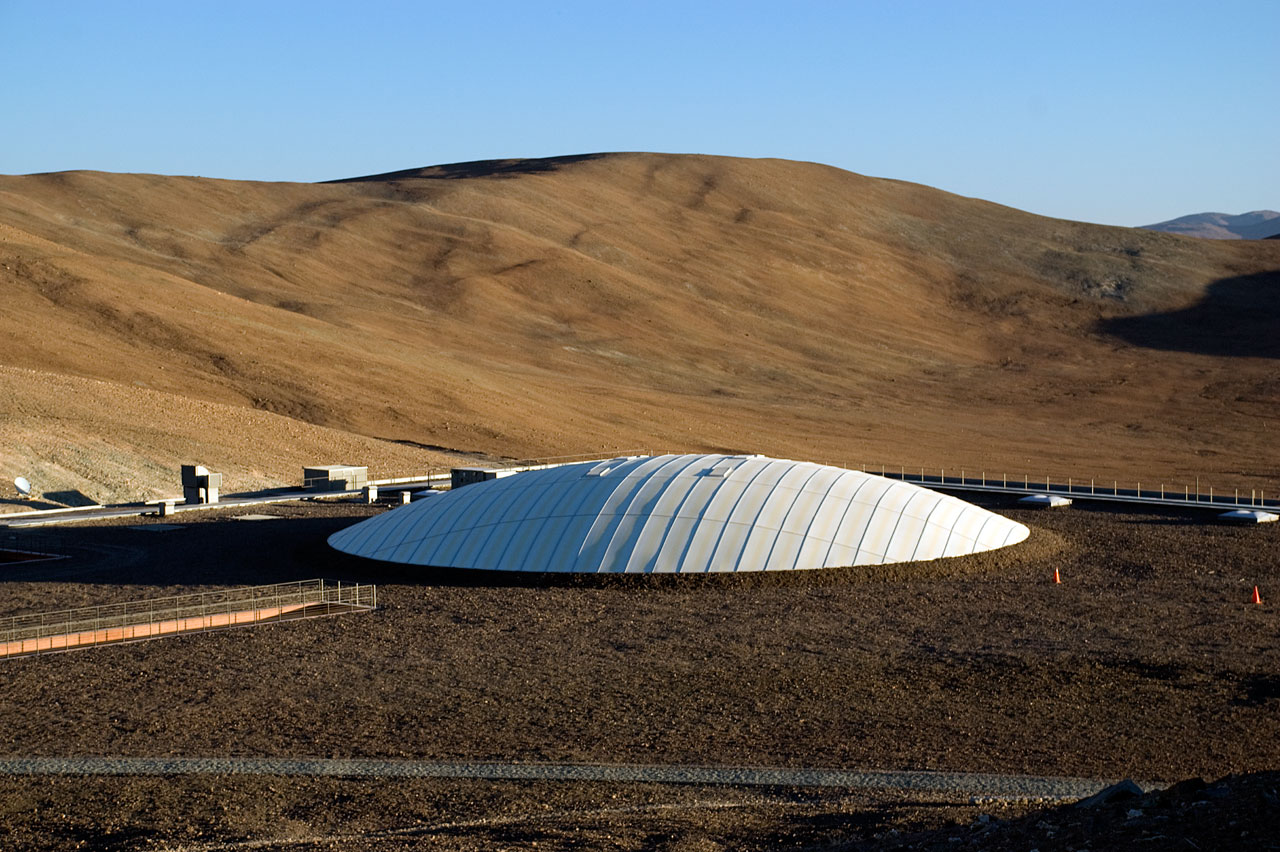
The VLT Trailer
Download the VLT trailer in the video archive.
VLT
| Proper noun: | Very Large Telescope |
| Site: | Cerro Paranal |
| Altitude: | 2635 m |
| Enclosure: | Meaty optimised cylindrical enclosure |
| Type: | Optical/infrared, with interferometry |
| Optical design: | Ritchey-Chrétien reflector |
| Diameter. Chief M1: | 8.20 m |
| Textile. Primary M1: | ZeroDur |
| Diameter. Secondary M2: | 0.94 m |
| Material. Secondary M2: | Beryllium |
| Bore. Third M3: | 1.242 x 0.866 m (elliptical apartment) |
| Mount: | Alt-Azimuth mount |
| Offset Lite date: | UT1, Antu: 25 May 1998 UT2, Kueyen: 1 March 1999 UT3, Melipal: 26 Jan 2000 UT4, Yepun: iv September 2000 |
| Active Optics: | Yes |
| Adaptive Eyes: | UT4: Laser Guide Star + SINFONI UT1: NACO UT3: SPHERE |
| Interferometry: | UT maximum 130 m baseline. UT + AT maximum 140 m baseline. |
| Images taken with the VLT: | Link |
| Images of the VLT: | Link |
| Videos of the VLT: | Link |
| Press Releases with the VLT: | Link |
Did y'all know?
The smallest detail distinguishable with the VLT's adaptive eyes system is smaller than the size of a DVD on the International Space Station, every bit seen from the basis (about 50 milliarcseconds).
Did you know?
The smallest detail distinguishable with the VLTI is nearly the size of a sesame seed on the International Infinite Station, as seen from the ground (about 2 milliarcseconds).
Did you know?
Stars grade in dense clouds of the interstellar medium, but even in these densest regions the pressure level is comparable to the most tenuous vacuum created in a laboratory on Earth. In these clouds, the temperatures are below -200 degrees Celsius.
Did you know?
When astronomers combine the light waves from two telescopes using the principle of interferometry, they tin can very precisely decide the direction of an object in space. Your ears work in a like way to localise sounds, by comparing the audio received at the left and correct ears.
Did you know?
The skies over the ESO sites in Chile are so dark that on a clear moonless night it is possible to run into your shadow cast past the light of the Milky Way lonely.
Did you know?
The VLT 8.2-metre diameter primary mirrors were polished so precisely that if they were scaled up to the diameter of the Earth, the largest imperfection on them would withal be no larger than a pebble.
Did you know?
The VLT mirrors are eight.2 metres in diameter, but just 17.5 cm thick — very thin relative to their size. If you scaled the mirror downwardly to the size of a CD, its thickness would be equivalent to but two discs placed on acme of each other. Despite being very thin, the large bore means the drinking glass weighs 23 tonnes.
Did yous know?
The movable structure of each VLT Unit Telescopes weighs about the same every bit a fully loaded jumbo jet. However, information technology is and then perfectly balanced, resting on hydrostatic oil-moving picture bearings, that the giant telescopes tin be moved by hand.
Did yous know?
The Paranal observatory site is so remote that everything needed must exist brought in specially. The sixty 000 litres of water that are used per day are delivered by truck from Antofagasta.
Source: https://www.eso.org/public/teles-instr/paranal-observatory/vlt/
Posted by: troyothere.blogspot.com

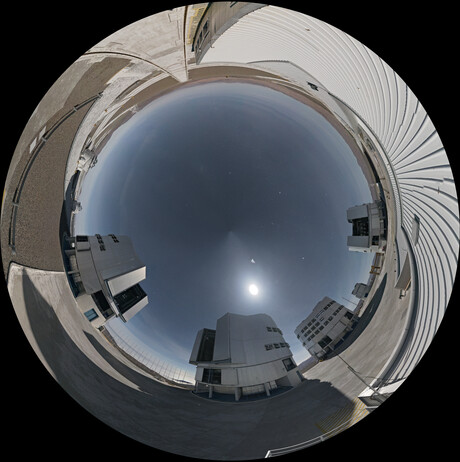
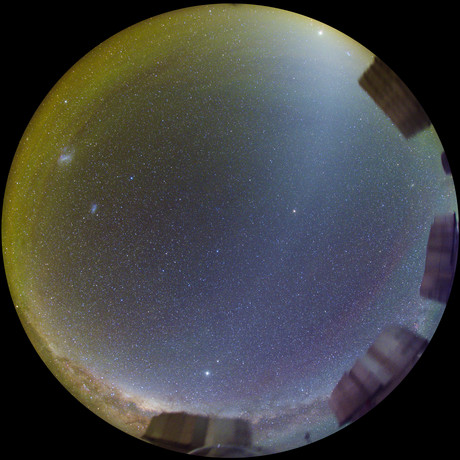

0 Response to "How To Take Videos Of The Planets Through A Telescope With A Canon Rebel Camera"
Post a Comment